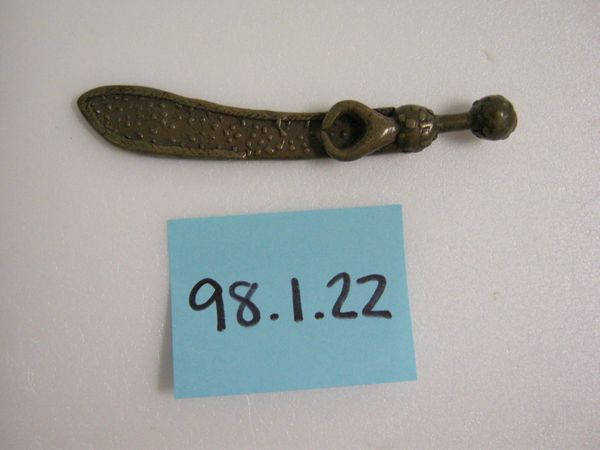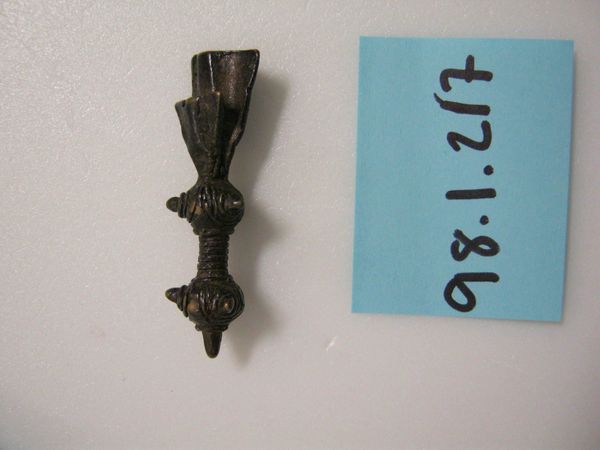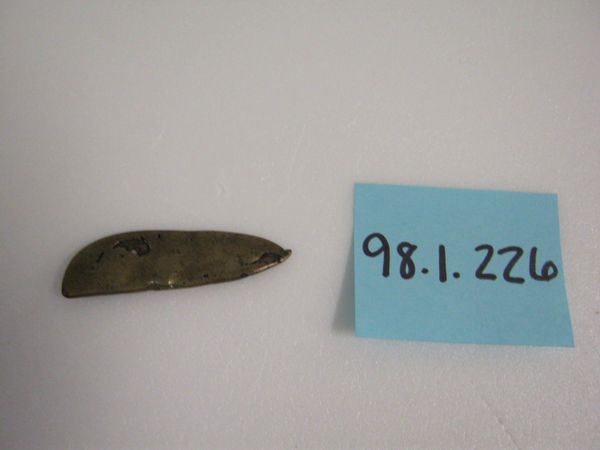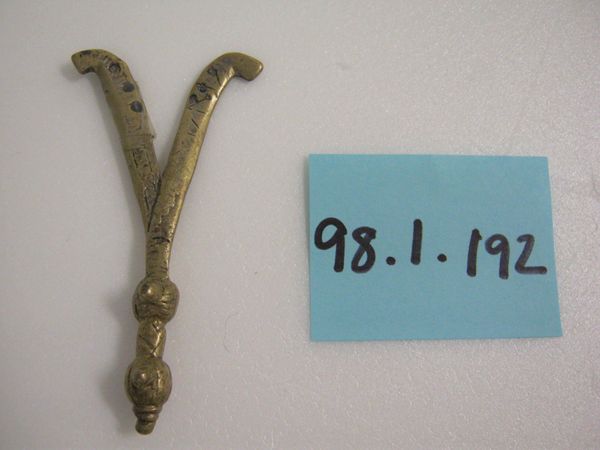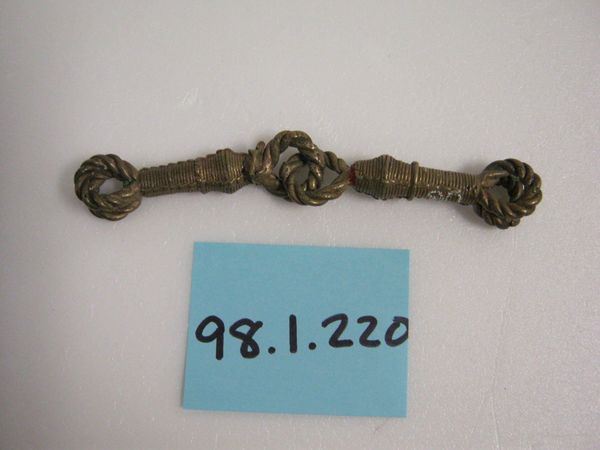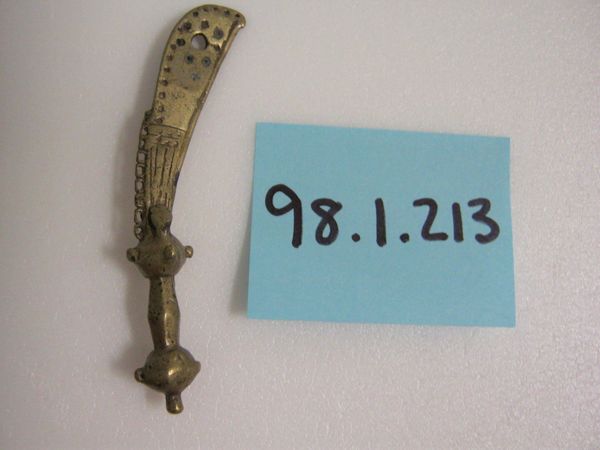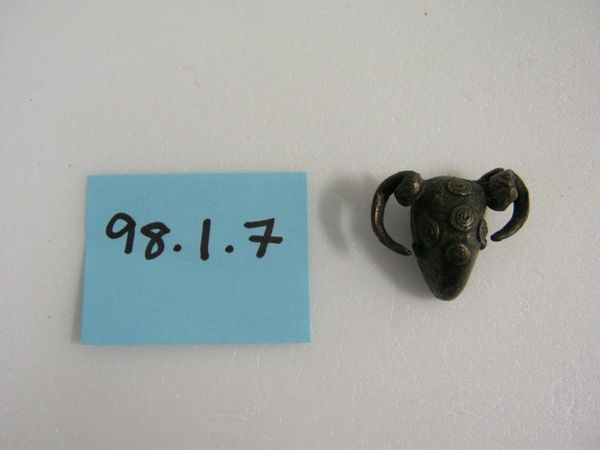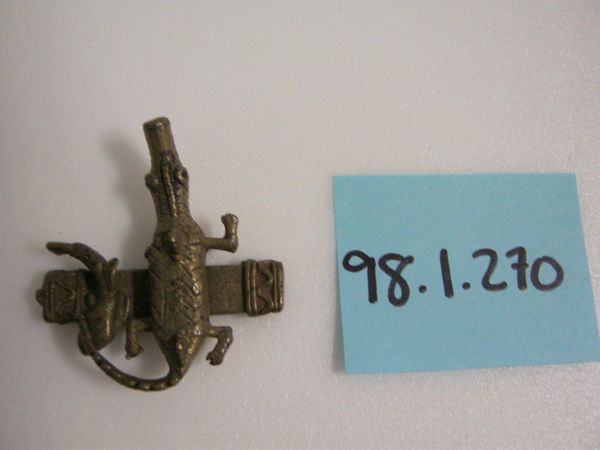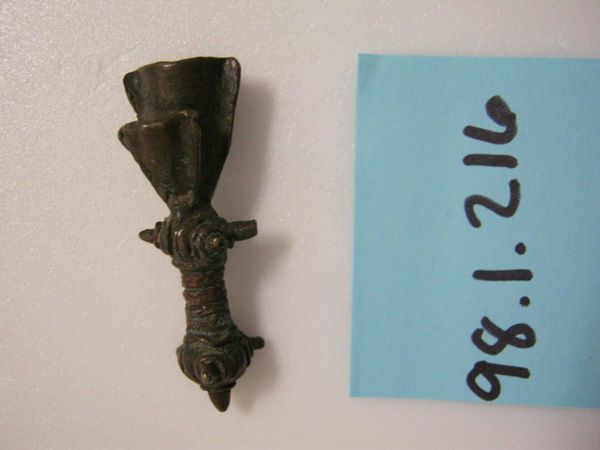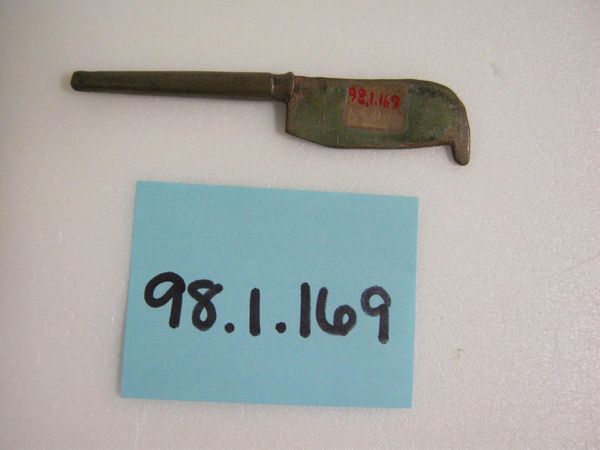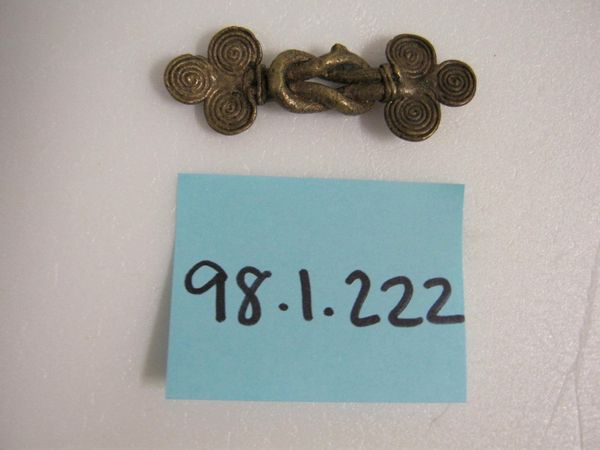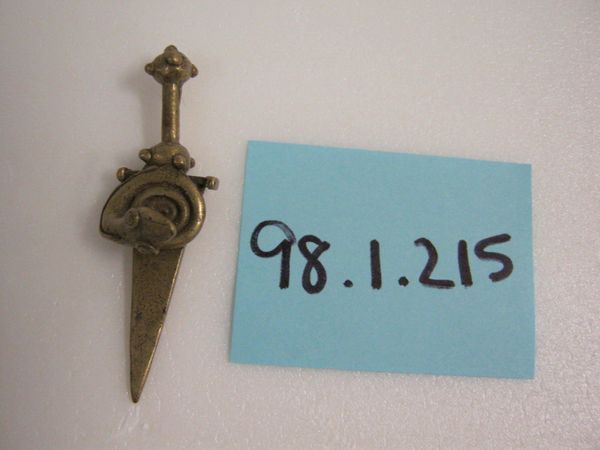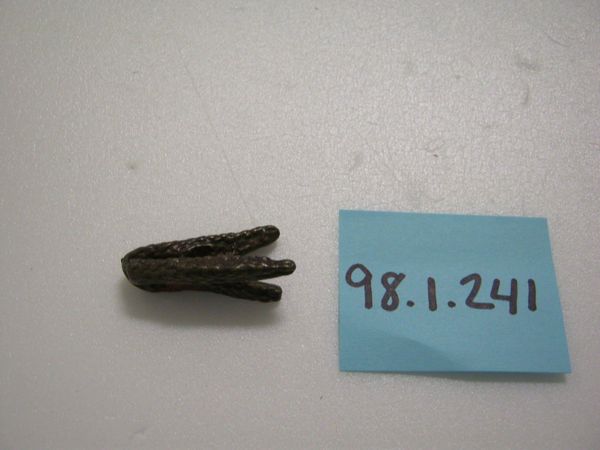![Goldweight [Sword] by Akan](/_next/image?url=https%3A%2F%2Fd2w8kbdekdi1gv.cloudfront.net%2FeyJidWNrZXQiOiAiYXJ0ZXJhLWltYWdlcy1idWNrZXQiLCAia2V5IjogImFydHdvcmtzLzI4MTg4ZDI0LWNmZGUtNGVkYS1iOWY2LWJlNzAwOGVjNjNjMC8yODE4OGQyNC1jZmRlLTRlZGEtYjlmNi1iZTcwMDhlYzYzYzBfZnVsbC5qcGciLCAiZWRpdHMiOiB7InJlc2l6ZSI6IHsid2lkdGgiOiAxOTIwLCAiaGVpZ2h0IjogMTkyMCwgImZpdCI6ICJpbnNpZGUifX19&w=3840&q=75)
brass, sculpture
#
brass
#
sculpture
Dimensions: 3 9/16 x 1 x 1/2 in. (9.05 x 2.54 x 1.27 cm)
Copyright: Public Domain
Editor: Here we have an Akan goldweight, shaped like a sword, crafted from brass sometime in the 19th or 20th century. The piece looks quite small and ornamental, with interesting perforations along the blade. What strikes you about its form? Curator: Its geometry. Note the contrasting shapes: the solid, almost phallic handle versus the crescent blade punctured with circular voids. How does this juxtaposition alter your understanding? Editor: It creates a tension. The handle implies force and solidity, while the blade… well, it's full of holes, seemingly negating the sword's purpose. Curator: Precisely. The negative space becomes integral to the composition. Consider how the artist manipulated the brass. The casting suggests a deliberate contrast between mass and lightness, weight and airiness. Notice also the handle decoration. Editor: It looks like raised rings. What role do these concentric forms have on the handle's surface? Curator: The placement and regularity of these divisions accentuate the handle’s volume. It creates a more intricate silhouette. Observe how light falls and moves around the goldweight's volume and textures. Do we perceive value? Editor: There is definitely some variation where light hits it versus areas that appear aged. I can't help thinking, though, that something that looks like it could function has no utility, since it is miniaturized. Curator: Does that diminishment frustrate the reading or intrigue you more? How does scale inform our perception of power and function in this piece? The contrast between utility and abstraction makes a rich ground to interpret this curious work. Editor: Seeing how its material form contradicts the functionality it imitates is really interesting, which I definitely missed before. Thanks for highlighting all of the art's forms in that way!
Comments
No comments
Be the first to comment and join the conversation on the ultimate creative platform.
